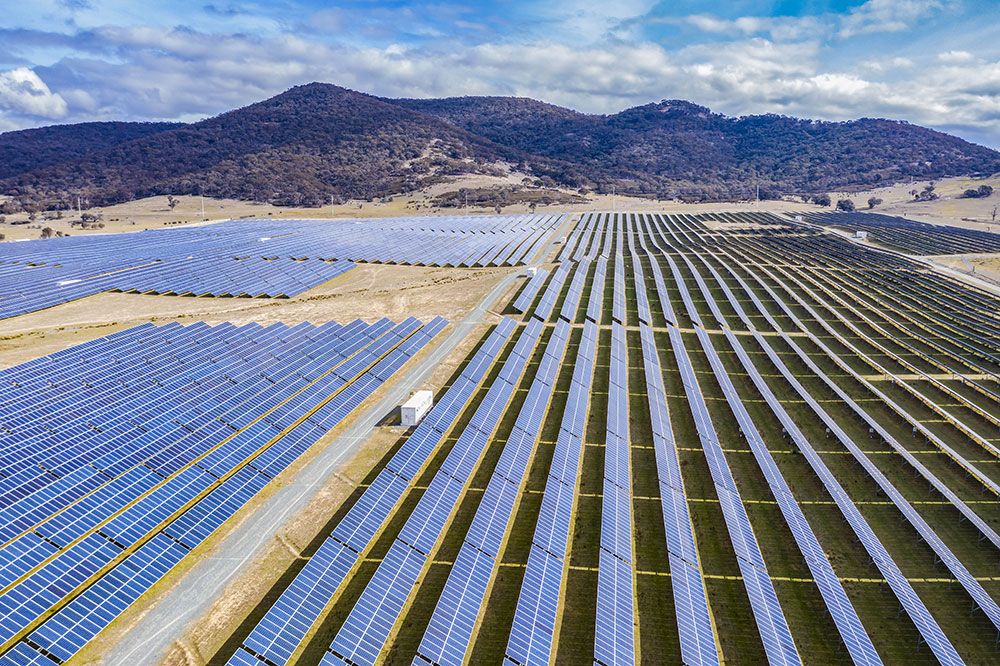Solar Power and Western Australia: The Clean Energy Council (CEC) has confirmed that there is unprecedented activity happening across the renewable energy sector in Australia. Out of almost 100 existing construction projects focusing on adding more renewable energy infrastructure in the country, 12 of them are in Western Australia. Many of these projects involved commercial solar farms.
Over the past decade, solar installation grew in numbers. The cost of panels, inverters, and other equipment reduced dramatically as well. New technologies guarantee that there is still more to expect out of solar systems with increased efficiency and further lower costs. It could confirm Solar energy might soon surpass fossil fuels.
The Increase in Renewables as the New Normal
Back in 2010, solar had a small share in the global market. It was mainly reliant on subsidy regimes in Germany, Italy, and a few other countries. Ten years later, more megawatts will be installed across the world, including Australia. These numbers can easily beat other generation technologies even when put together.
Aside from the expanding markets, solar has become increasingly affordable, especially in Western Australia and other sunny regions. In the coming years, it is anticipated that there will be even more technology improvements. They will ensure that solar will be even more accessible, particularly for homeowners with a limited budget.
The forecast is that solar could well be the most significant energy source for electricity production, not just in Australia but the rest of the world.
One thing that people should know about solar is that it does not just lower the monthly power bills. Having a system installed on your roof provides numerous benefits, including its positive impact on climate change and the environment as a whole.

Let us also remember that solar is quick to install. It is also flexible since it can power up something small to a whole house and even an entire large city.
As Western Australia is hailed as one of the sunniest places in the world, rooftop solar has become a massive success. The state’s main grid covers Perth and most of the south-western portion of the continent. Yet, about one in three houses has a solar system installed.
Of course, the energy grid is not exactly happy with the situation. After all, it is causing a huge loss for companies. For instance, in September 2019, Synergy confirmed its $657 million loss for 12 months from June of 2018. The plan is to control the numbers and capacities of solar systems in WA. Part of the reason for the lower bottom line is the realisation of consumers that fossil fuel-powered plants are detrimental to the environment. It is why they want to support and use renewables, such as solar, instead.
Energy companies warn about the instability that could jeopardise the entire system. Western Australia, unlike other states, is isolated. South Australia, in fact, has higher levels of renewables. However, it does not face the same issues as WA. The goal now is for the state to cut its reliance on other markets. It should do so when the supply or demand is disrupted.
WA has a unique placement in which its islanded nature exposes it to a lot of technical challenges. These challenges can be solved and controlled.
Current Projects Supporting Renewables
The Australian Energy Market Operator (AEMO) named Western Solar as the hub for solar uptake in the country with almost 700MW capacity. However, there seems to be no stopping in the growth of solar use and installations in the state.
The first major solar farm in WA was the Greenough River Solar Farm in Geraldton. It started operating in 2012 with a capacity of 10 MW with about 150,000 solar panels. The largest, however, opened in 2018 and was called the Emu Downs Solar Farm with a 20 MW capacity.
There is a proposal for the Asian Renewable Energy Hub, which would have around 3,500 MW of power, which will also have 7,500 MW of wind power.
A renewable hydrogen facility also opened last year with plans of upping the current solar and wind projects to 5,000 MW of capacity. This project, along with the Asian Renewable Energy Hub proposal, could position the WA as the dominant producer of renewable fuel technologies.
The Government offers incentives for those who may want to switch to solar this year or the next. While it may not be ideal to go off-grid right now, solar technology has scaled up in Western Australia. It now includes strata homes and suburbs, including the One Planet Community development in Fremantle. This project received more than $500,000 ARENA grant for the installation of PV and batteries.
Other ways that the Government is assisting with solar projects include:
- Over $290 million financial aid to 300 solar research and projects
- Investing in solar thermal research, it’s development and implementation
- ARENA grant funding, leading to the creation of 1.5 GW of solar farms around the country, including $90 million for Large-Scale Solar projects in WA, Queensland, and New South Wales
- The Instant Asset Write-Off for business purchases, including solar systems
Some projects may start or finish this year, including the Alinta Fortescue Solar Gas Hybrid Project. It focuses on helping remote mine sites in the Pilbara region, which is believed to be heavily dependent on gas and diesel for energy.
The Government is one with companies and homes that want to take advantage of the benefits of solar power. It is no wonder why predictions point to even higher consumption of renewable power sources in the coming years. By 2030, about 44% of Western Australia’s energy may come from solar and other renewable sources.

The Future Looks Bright for Solar Power in WA
Going forward, the industry has clear roadmaps moving towards cost reduction. By 2030, solar costs could be halved. An initiative is already in place to create higher-efficiency modules. The aim is for them to generate 1.5 times more than the existing power that we have now. These modules are proposed to have the same size as the current ones. However, they will use a technology known as tandem silicon cells, which will be more efficient than ever.
Additionally, innovations in production are coming down the pipeline to lower the amounts of materials, including silicon and silver. These materials are used in manufacturing solar cells, which may soon be more affordable. Technologies also exist, such as bifacial modules, which pertain to panels that can capture energy from two sides.
Other revolutions will also make solar panel technologies even more interesting. It’s time for people to forget that solar installation requires a vast parcel of land. It also does not need a home to have a spacious roof. The following are promising technologies that can change the way we think about solar and energy production as well:
- Floating Solar FarmsAlso known as floatovoltaics, they consist of photovoltaic panels on a body of water. Experts believe that panels can offer greater efficiency if they are on a reservoir or any water body. They can generate a considerable amount of electricity but do not need real estate or land. The installation cost, therefore, will be much less than having the panels installed on a roof.
There is still no certain date regarding when these floating solar farms will emerge in Western Australia. However, they are something to watch out for.
- Building-Integrated PVThis solar technology seamlessly blends panels into the architecture of the building. They can be installed on the roof, curtain walls, skylight systems, or canopies. They work the same way as traditional solar panels. They are also aesthetically appealing, especially for those who do not want to comprise their current building design.
- Solar SkinsNew photovoltaic technology is in the form of solar skins, where custom designs can be integrated into the systems. You can envision it as similar to how ad wraps work on bus windows.
Although these three technologies are still in their testing phases, they could soon be available in Australia. They mostly target homeowners and businesses that worry about how panels can affect the look of their property. However, they also provide significant benefits, including:
- Increased energy efficiency
- Decreased operations and manufacturing costs
- Thermal and sound insulation
- Zero carbon footprint
- Free and clean power from the sun
Companies are also looking to improve on how people can integrate solar – whether it will be installed on the roof of their businesses or homes. If it is successful, we will see a better means of using power electronics and digital technologies at such a low cost.
We can all expect to see these broad changes and more in WA and the rest of Australia’s energy system. There is a current shift to distributed and bi-directional generation of energy, as opposed to the use of centralised power.
The future of solar is indeed exciting. With many projects in Western Australia and more citizens choosing solar to power their homes, there is no doubt that now is a great time to go solar.
FAQs
Q: What is solar power, and how does it work?
A: Solar power is a renewable energy source that harnesses the energy from the sun to generate electricity. Solar panels, typically installed on rooftops or open areas, contain photovoltaic (PV) cells that convert sunlight into direct current (DC) electricity. An inverter then converts DC electricity into alternating current (AC) electricity, which can be used to power homes, businesses, and other electrical devices.
Q: Why is solar power important for Western Australia?
A: Solar power is important for Western Australia due to its abundant sunlight and vast open spaces. The state has great solar energy potential, and harnessing this resource can reduce reliance on fossil fuels, lower greenhouse gas emissions, and contribute to a cleaner and more sustainable energy future for the state.
Q: What are the benefits of solar power for Western Australia?
A: Solar power offers several benefits for Western Australia, including:
- Clean and Renewable Energy: Solar power generates electricity without producing harmful emissions, reducing the carbon footprint and promoting cleaner air quality.
- Cost Savings: By installing solar panels, households and businesses can reduce their electricity bills by generating their own energy. Over time, solar power systems can provide significant cost savings on energy expenses.
- Energy Independence: Solar power allows individuals and communities to become more self-sufficient in meeting their energy needs. By generating their own electricity, they are less reliant on the grid and can have greater control over their energy consumption.
- Job Creation and Economic Growth: The solar industry creates job opportunities in installation, maintenance, manufacturing, and related sectors. Embracing solar power can stimulate economic growth and contribute to a sustainable, low-carbon economy.







